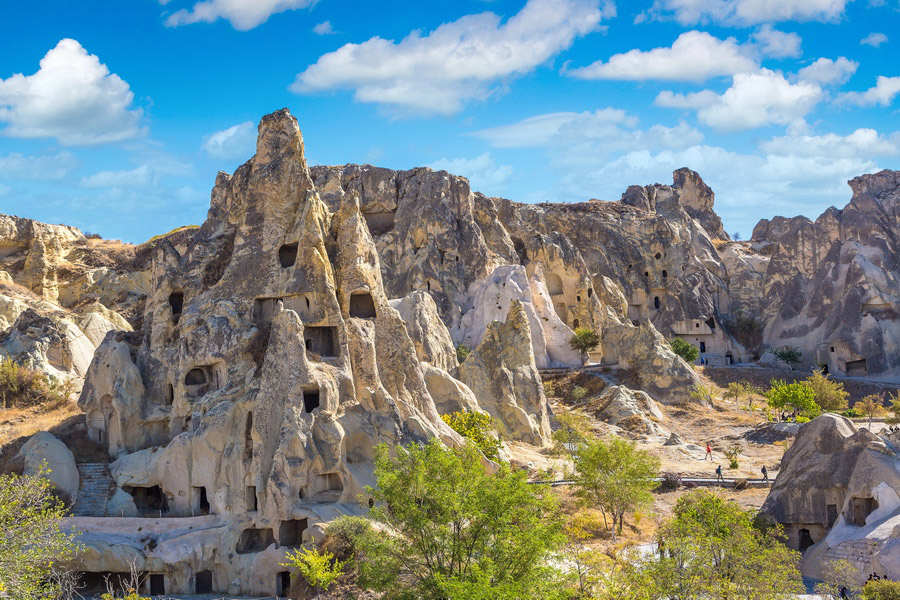In the charming heart of Turkey (Türkiye), Central Anatolia, the culture seems tough and natural. The region is famous for its ancient attractions, gripping history and distinctive forms of local life. İç Anadolu Bölgesi in Turkish, and sometimes referred to as a central region, it is the wide-open, rugged middle of Turkey where sky, cities, ancient nations and empty steppes lie beyond the Red River (Kızılırmak) border.
A monument of contemporary Turkish cinema, Once Upon a Time in Anatolia brilliantly shows the atmosphere – it stretches on eternally, is entirely quiet and odd and has a very slow tempo and its defining historical region, Cappadocia’s name comes from the Persian word katpatuka, meaning land of beautiful horses, which additionally defines the whole essence of the region.
Most of the land consists of a high plateau that dries up in the summer sun and becomes freezing during the lengthy winters. Being bordered on the south by the Taurus and on the north by the Northern Anatolian ranges, Turkey is similar to a body with a spine between its shoulders. Waters here slowly move through narrow trenches and gorges as if sneaking around. While the rivers widen, then wheat and sunflowers grow.
Travel in the Central Anatolia Region guarantees seeing the fairy chimneys and cave houses of Cappadocia, visiting the ancient Hittite capital of Hattusha (Hattusa), standing on the shores of Turkey’s second-largest lake, Tuz Gölü, walking through the remains of Çatalhöyük – one of the world’s oldest known settlements, exploring underground cities sculpted in soft volcanic rock, climbing the citadel in Ankara and visiting Atatürk’s mausoleum, watching hot air balloons take off at sunrise and driving through wide steppes where small villages and wild horses still create existence.
Central Anatolia Region Tours
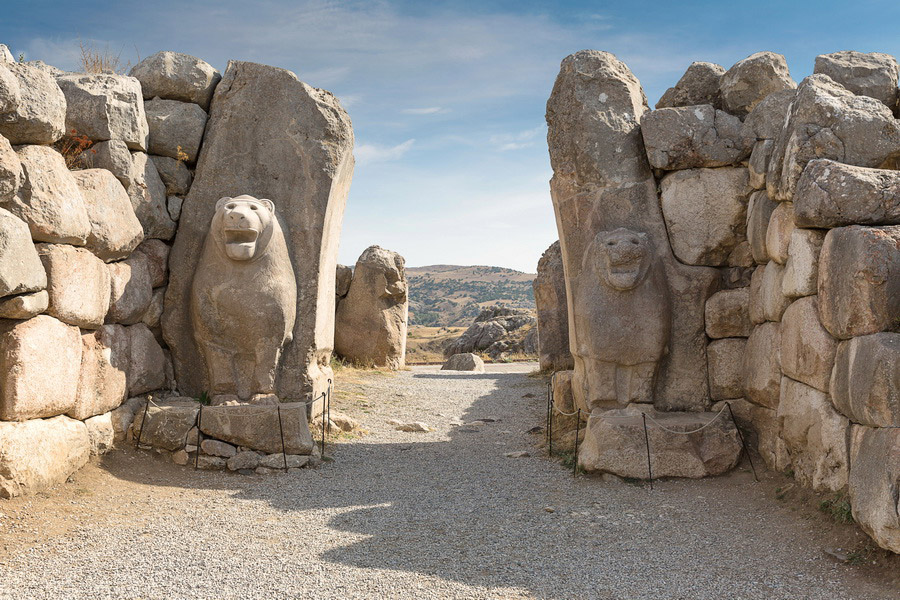
Tours in Central Anatolia will take you from Ankara to Konya, where Mevlâna’s tomb rests under emerald tiles and dervishes still dance; from Cappadocia’s ancient rock churches and homes to the Phrygian temples.
This is the region where humanity’s story begins with its 10,000 years of history, from the Hittites and Phrygians to the Seljuks and Ottomans.
This vast plateau, surrounded by mountains, holds some of Turkey’s most remarkable UNESCO sites, including Çatalhöyük (one of the world’s oldest settlements), Hattusha (the Hittite capital), and the stunning Divriği Great Mosque (Divriği Ulu Camii).
Central Anatolia Tours additionally take you to Alacahöyük, a key Hittite city, and Aizanoi, where the Temple of Zeus and the world’s first stock exchange stand. In Ankara, the Museum of Anatolian Civilisations reveals artefacts dating back to 9000 BC, while Anıtkabir honours Atatürk, modern Turkey’s founder. Konya grants spiritual depth at the Mevlâna Museum, and Cappadocia mesmerises with its fairy chimneys and underground cities and churches.
For history, culture, and nature, Central Anatolia is unmatched, from Roman baths in Yozgat to the rock-carved villages of Sille.
Best Time to Visit the Central Anatolia Region

With temperatures ranging between 20-28°C (68-82.4°F) during the day and cooler mornings and evenings, the best time to visit Central Anatolia is spring and early autumn. These months are ideal for outdoor activities such as hiking, historical site visits and hot air balloon tours in Cappadocia. Rainfall is low, and crowds are smaller than in peak summer.
August is the hottest month, with highs reaching 34°C (93.2°F) in Polatlı and 32°C (89.6°F) in Cappadocia. Evenings drop to 15-18°C (59-64.4°F). Despite the heat, August is still considered a good time for Central Anatolia tourism due to clear skies and long days.
In winter, you can ski down the volcanic slopes of Erciyes Ski Resort, where Central Anatolia’s highest peak (3,916 m) turns into a snow-covered paradise from November to May. With 34 tracks stretching over 102 km and a high-speed lift system that carries over 26,000 skiers per hour, Erciyes welcomes everyone.
For cultural travellers, the International Wine Festival in October represents a unique local experience. Central Anatolian cuisine like testi kebab and manti is best enjoyed in cooler seasons.
For exploring underground cities, attending Central Anatolia tours and relaxing in quiet villages, both spring and fall deliver the best conditions.
Uncover the Charms of the 13 Provinces of the Central Anatolia Region
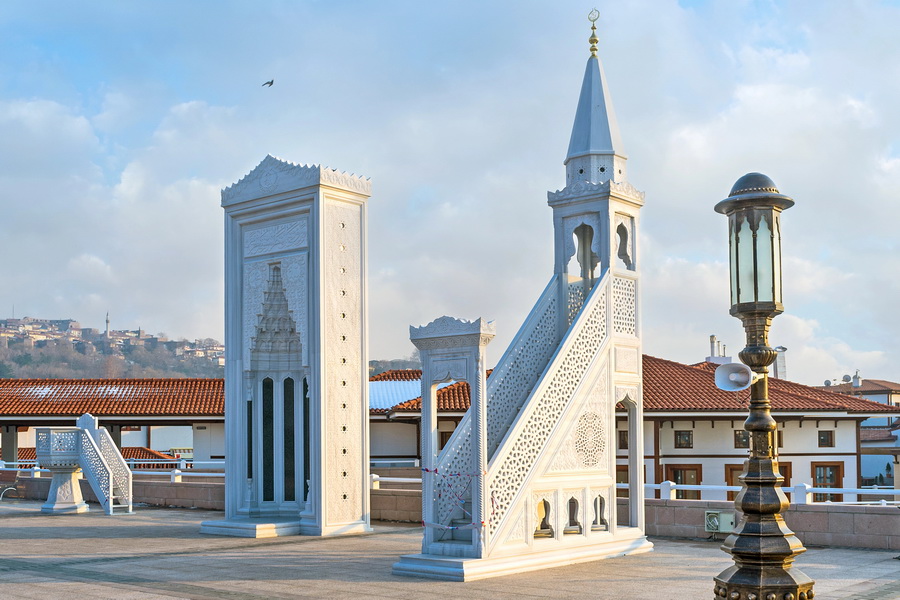
This vast region of central Turkey is made up of 13 provinces, each with a distinct geographical, historical and industrial weight. Ankara, the capital of the nation and second most populous province with over 5.7 million people, has been a settlement area since ancient times and home to the Phrygians, Persians, and Romans; later for the Seljuks and Ottomans. Its terrain ranges from forested mountains to dry plains, with the Kızılırmak and Sakarya rivers watering much of the land.
Konya, the largest province in Turkey by area (40,813 km²), lies in the southwestern part of Central Anatolia and was historically a Seljuk capital. Konya is home to the tomb of Rumi and has a rich cultural heritage.
To its west lies Eskişehir, an old city known for education and culture, with three universities, including Anadolu University, which is the largest in Turkey by enrolment. Kırıkkale, once part of Ankara Province, became its own in 1989 and quickly turned into a major industrial centre due to its steel and chemical plants.
Nevşehir, Niğde and Aksaray make up the core of Cappadocia, a region formed by volcanic activity. Nevşehir is known for the fairy chimneys of Göreme, while Mount Hasan stands as a natural divider between Aksaray and Niğde. Aksaray also contains a part of Tuz Gölü, one of the largest salt lakes in the country. Niğde, surrounded by the Taurus and Melendiz mountains, combines mountainous landscapes with historical sites.
Kırşehir, located at the geographical center of Earth, according to some sources, was temporarily dissolved in 1954 due to political reasons before being reinstated in 1957. Yozgat, the largest by area among these provinces, connects the eastern and western parts of the region and borders eight provinces. Neighbouring Yozgat, historically significant Sivas played a central role in the Turkish War of Independence, hosting the Sivas Congress in 1919.
Kültepe, ancient Kaneš or Neša, lies in Kayseri, Turkey. Inhabited since the 3rd millennium BC, it became a key Middle Bronze Age trade centre. Over 23,000 cuneiform tablets were found in its kārum, with rare insights into Assyrian trade networks and private life in ancient Anatolia.
Pessinus, in modern Ballıhisar, Eskişehir, was a major Phrygian city and religious heart. Excavations revealed a 1st-century AD imperial cult temple built on a grand stepped podium, wrongly identified earlier as the Temple of Cybele. Its theatre-temple design reflects Roman influence and links gladiatorial rituals with emperor worship.
Karaman, once the seat of the Karamanid Beylik, holds historical baggage, while Çankırı remains a quiet, modestly populated neighbour of Ankara. Kayseri, home to more than 1.4 million people, stands out with its chronicled significance and central location in Turkish mythology and Silk trade routes.
Explore the History of the Central Anatolia Region

The region’s story begins with Çatalhöyük, one of the planet’s first known settlements (7500–6200 BC), where Neolithic people lived in compact mud-brick houses decorated with vivid frescoes. This UNESCO-listed site near Konya displays prehistoric life and is a must-visit for Central Anatolia tourism.
By the Bronze Age, the Hittites dominated the area, establishing their capital at Hattusha (now Boğazkale). This powerful empire clashed with Egypt and left behind towering walls, temples and the rock-cut sanctuary, Yazılıkaya.
The Phrygians arrived around 1200 BC, making Gordion their capital. Today, visitors can see the ruins of Gordion and the alleged tomb of King Midas.
Later, Romans and Byzantines shaped the region, particularly in Cappadocia, where early Christians carved hidden churches and underground cities like Derinkuyu to escape persecution. The surreal landscape of fairy chimneys and frescoed caves remains a highlight of Central Anatolia tours.
The Seljuks transformed Konya into a cultural centre in the 12th century. Though the Ottomans paid less attention to the region, the arrival of the Berlin-Baghdad railway in the early 20th century revived its economy. Modern history pivots around Ankara, which became Turkey’s capital in 1923 under Atatürk.
Plan Your Dream Holidays in the Central Anatolia Region
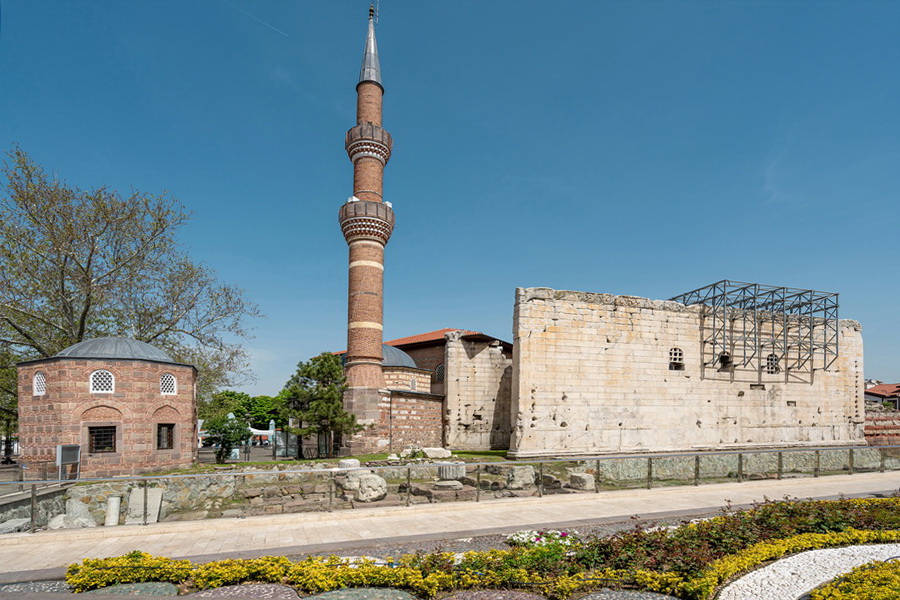
Cappadocia’s underground cities and fairy chimneys, Göreme’s ancient churches, Ankara’s Roman relics, and surreal landscapes, Central Anatolia is a goldmine of history, adventure and relaxation. From hot-air balloons at dawn to pacifying thermal springs, every moment here is a venture.
Cappadocia’s Underground Cities & Fairy Chimneys
Millions of years of volcanic activity shaped Cappadocia’s iconic fairy chimneys – cone-shaped rock formations reaching up to 40 metres tall. These subterranean labyrinths, some eight levels deep, included ventilation shafts, wells and even stables.
Göreme National Park & Uçhisar Castle
A UNESCO World Heritage Site, Göreme Open-Air Museum spotlights rock-cut churches from the 10th century, including the Dark Church with its remarkably preserved frescoes. Nearby, Uçhisar Castle (Uçhisar Kalesi) once sheltered 1,000 people in its tunnels.
Ankara’s Augustus Temple & Anatolian Civilisations Museum
In Ankara, the Augustus Temple dates back to Roman rule, bearing Emperor Augustus’s bilingual inscriptions. Nearby, the Ottoman-era Hacı Bayram Mosque (Hacı Bayram Câmii) lies. The Anatolian Civilisations Museum, housed in a 15th-century Ottoman building, chronicles Anatolian history from the Palaeolithic era to classical antiquity and is available with Museum Pass Turkey.
Its collections, including Hittite and Phrygian artefacts, earned it the title of "Europe’s Museum of the Year" in 1997.
Thermal Springs & Wellness Tourism
Thermal springs have long played a role in Central Anatolia’s health traditions, shaping the region as a dream holiday destination. In Sivas, the Fish Spring (Balıklı Kaplıca) is known for its therapeutic climate, mineral-rich waters and doctor fish and has become a notable destination for those with chronic skin conditions like psoriasis.
Elsewhere in the region, Turkish baths remain central to the cultural experience. Cappadocia’s hammams, rooted in Ottoman-era practices, deliver steam-free bathing rituals.
Cultural Heritage & Traditional Crafts
In the heart of Central Anatolia, traditional crafts keep the daily life and cultural memory of the region. In Avanos, a town in Cappadocia, pottery-making goes back to Hittite times (2000–1500 BC). The red clay from the Kızılırmak River delta provides ideal material, while soft tufa stone allows potters to carve kilns (ovens) into the rock and maintain studio spaces that stay cool in summer and warm in winter. Pottery is still largely a male tradition, while women have long produced woven carpets and kilims dyed with natural pigments. Cappadocia is also known for its onyx, transformed by local craftsmen into lamps, bowls, and ornamental pieces.
Marvel at Natural Wonders and Delight in Outdoor Activities
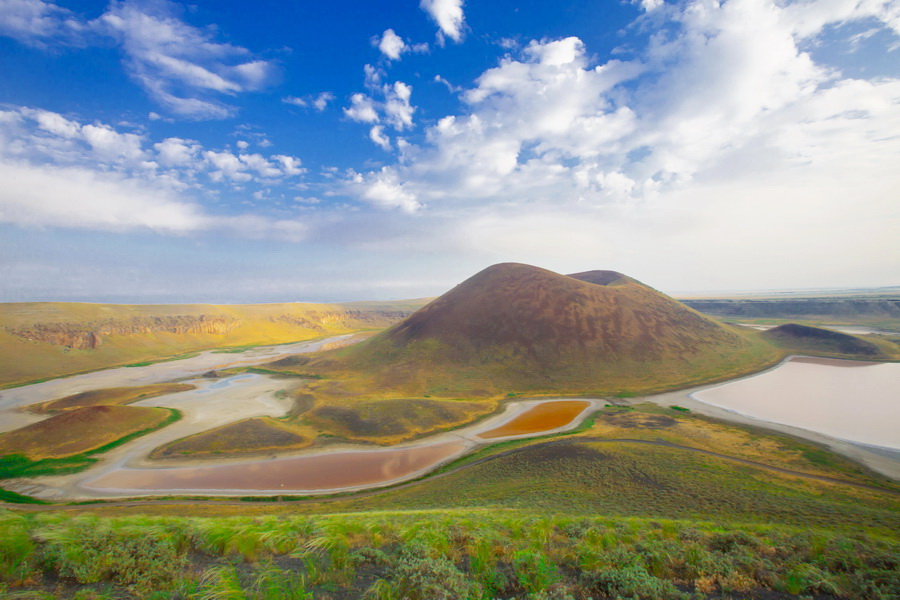
Central Anatolia is a land of striking contrasts and a paradise for outdoor enthusiasts. Among its defining features is the Cappadocian plateau, perfect for hiking, aerial exploration and off-road escapades.
Hiking is perhaps the most rewarding way to take in the region's details. Trails wind through valleys like Rose, Red, Love, Pigeon, and Zemi, each with distinct topography and colours, shaped over millennia. The Ihlara Valley (Ihlara Vadisi), carved by the Melendiz Stream, has a longer route lined with rock-cut churches and monasteries. Gorkundere Valley (Gorkundere Vadisi) near Göreme, less frequented than others, rewards walkers with some of the tallest fairy chimneys and is accessible by foot or car.
Another magical experience you can have is riding a horse or camel through the valleys of Göreme National Park while watching hot-air balloons rise into the sky. These tours usually take place early in the morning during sunrise, when the landscape glows and the balloons float above the fairy chimneys. Both camel and horseback rides are guided, safe, and suitable even for beginners. You can book a short ride or a longer tour.
Paragliding and microlight flights are additionally popular in Cappadocia. Paragliders catch thermals over Göreme at dawn or dusk, while tiny, open-cabin planes piloted by licensed instructors, microlight aircrafts, perform 15-minute flights tracing the contours of the terrain below.
Jeep safaris present another dimension of exploration. Driving through the valleys means access to hidden viewpoints, ancient monasteries and areas unreachable by standard vehicles.
South of this geological wonderland lies Lake Meke, a double-crater lake in Konya's Karapınar district. Its saline waters fill a mere surrounded by a 50-metre-high cone, creating a landscape which looks and feels like Mars. Nearby, Lake Palas Tuzla (Palas Tuzla Gölü) in Kayseri is a seasonal saline basin at over 1,000 metres elevation, where bird migration routes intersect salt-covered wetlands. Farther west, Beyşehir Lake (Beyşehir Gölü) is the largest freshwater lake within Turkey’s borders and sits within a protected national park, sustaining a network of 33 islands.
Yozgat, a rare man-made national park 5 kilometres south of the city, holds black pine and juniper forests. It lies not far from Boğazköy, the former Hittite capital, placing a walk in the woods.
Green Escapes: Ecoregions and Sustainable Destinations
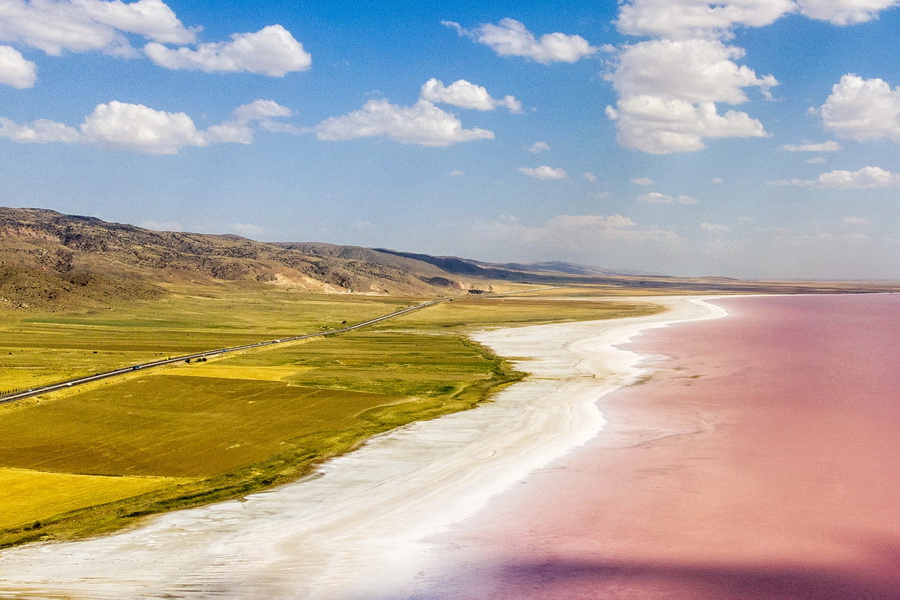
Central Anatolia’s ecological makeup is an endless steppe, but not only. Beneath the broad skies of this Turkish heartland, you’ll find a complex mosaic of ecoregions formed by climates, altitude and centuries of human activity. Dominated by a continental climate with hot summers and frigid winters, the region’s rainfall varies between 300 and 600 mm annually, giving rise to a delicate balance of grasslands, salt flats, river valleys and patchy deciduous woodlands.
The Central Anatolian steppe, classified within the Palearctic realm, one of the eight biogeographic realms of the world, roughly covers 24,934 km². Its terrain is mostly open plains and valleys, averaging 1,000 metres in elevation. Lake Tuz undergoes huge seasonal shifts and dries up in summer to reveal vast salt flats, then refills during the winter. This closed basin is encircled by arid salt steppes that support holophytic vegetation and a range of endemic plant species adapted to the extreme salinity. Bird species such as the great and little bustards, along with a rare subspecies of the Asian short-toed lark, make this region one of ornithological interest.
South of Lake Tuz, the Karapınar and Konya Plains make saline lakes and sparse vegetation, while the Obruk Plateau forms a natural barrier between basins. In contrast, the Central Anatolian deciduous forests, now heavily fragmented, once covered over half of the region. Today, less than 10% of that forest remains, replaced in many areas by anthropogenic steppe.
Archaeological evidence shows that ancient tumuli were built using timber species like yew, juniper, and cedar. Moreover, the firewood demands of ancient thermae likely accelerated regional deforestation. Tree clusters in Konya, Ankara, and Aksaray suggest a historical treeline around 1,090 to 1,300 metres, gradually pushed back over centuries.
Reconnect with Nature by Experiencing Farm Stays and Agrotourism
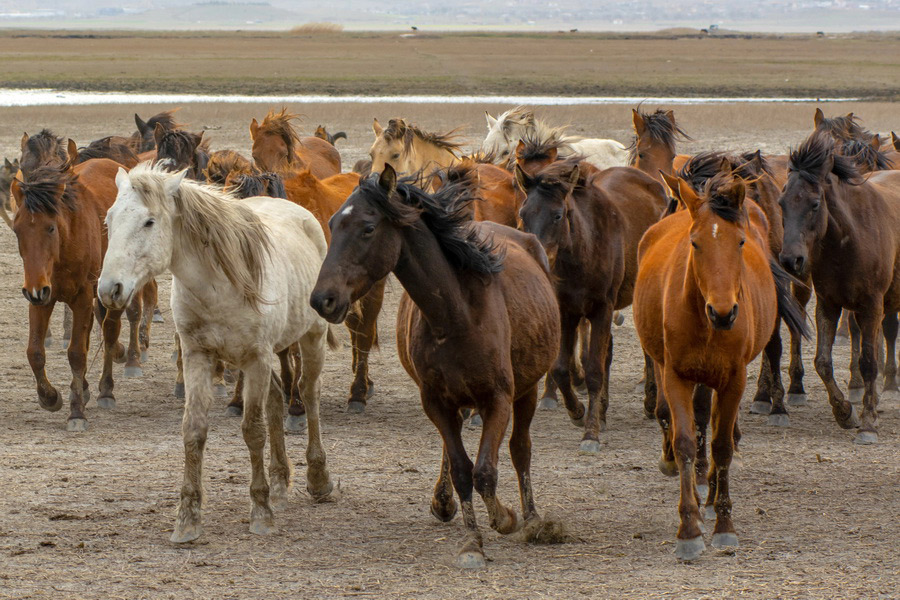
In Central Anatolia, farm stays and agritourism are visible in the region’s landscapes and livelihoods. One such destination is Kapadokya Organik Çiftlik Evi, located in Avanos. The 7-room farm villa provides direct access to traditional farming life, with bike rentals and horseback riding.
Caves were fabricated for everyday needs such as narrow slots for beehives, cliffside dovecotes to gather pigeon fertilizer and rock-cut wine presses to collect grape juice. They also built irrigation canals and cisterns, some over a thousand years old, to handle water shortages.
In Ankara, the Atatürk Forest Farm and Zoo is another chapter of agrarian history. Founded in 1925 by Mustafa Kemal Atatürk, it is a complex of greenhouses, a dairy, a brewery and restaurants. Visitors can still sample old-fashioned beer and traditional food in these spaces.
Embrace Sustainable Shopping: Enjoy Eco-Friendly Finds
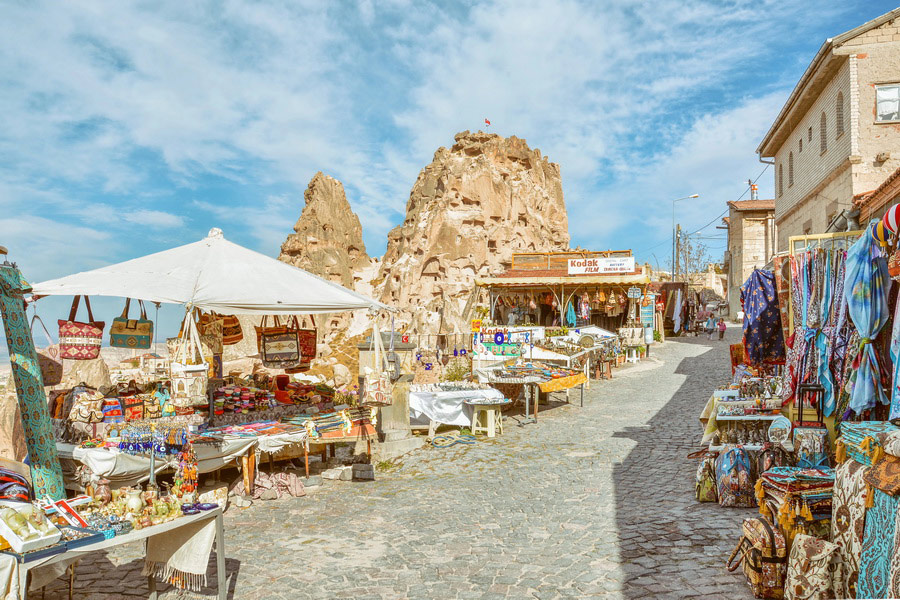
With sustainable and eco-friendly goods, Central Anatolia is one of the outstanding destinations where you’ll find veritable Turkish handicrafts. In Uçhisar, the Hisar Shop stands out as a heart of authentic Turkish textiles and ceramics, all made by local artisans. For visitors, special workshops are provided to learn about centuries-old techniques.
Safran Han in Ankara is an open-air market, built in 1512, distributing unique goods in an Ottoman-era setting. Nearby, the Historical Pilavoğlu Han Bazaar, once a horse market, now sells antiques and handmade crafts. Beypazari Historical Bazaar, active for over 600 years, showcases traditional coppersmithing, weaving and leatherwork.
Kazancilar Bazaar, behind the castle, and Kayseri Grand Bazaar in Kayseri are two of the largest covered markets since Ottoman times where you’ll find textiles, carpets and local foods. Suluhan Bazaar in Ankara, a 500-year-old market, features spices and handmade souvenirs away from modern mall culture.
Yunus Emre Public Bazaar in Eskişehir and Hunat Bazaar in Kayseri provide locally sourced fresh products at reasonable prices. Meanwhile, Bedesten Bazaar in Konya is famous for spices, sweets and handcrafted jewellery.
A Taste of Tradition: Regional Authentic Food of Central Anatolia

Food in Central Anatolia embodies centuries of pastoral life, village tradition and multicultural influences because of its heterogeneous history.
In Kayseri, pastırma is perhaps the most iconic find in which buffalo or beef cuts are salted, pressed and air-dried until the fat forms a natural layer. The meat is then coated with çemen, a paste of fenugreek and chilli, and then dried again. Kayseri is also famed for mantı, tiny dumplings filled with spiced ground meat and served with garlic yoghurt.
Konya’s renowned dish is etli ekmek, a thin flatbread topped with minced meat, tomato, onion and pepper, baked in a stone oven. It is commonly served during weddings and ceremonies, often with ayran. Cappadocia’s testi kebabı (or çömlek kebabı) is prepared with lamb, vegetables, and spices sealed in a clay pot and slow-cooked, with the pot broken open before serving.
In Kırşehir, the local speciality besmeç is a köfte made of bulgur and minced meat, while tandır böreği is a thin pancake filled with fillings like aubergine or mushrooms, cooked in a tandoor. Eskişehir is known for çi börek, a half-moon-shaped fried pastry of Crimean Tatar origin, traditionally filled with beef and onions, while for vegetarian options, it comes with feta cheese, spinach, mashed potatoes, and courgette fillings.
Sivas is celebrated for peskütan soup (Peskütan Çorbası), a preserved yoghurt-based dish with lentils and bulgur, and simple but distinct Sivas meatballs made only from meat and salt, kneaded twice over two days. Çankırı’s cimcik and Tatar soup (Tatar Çorbası) combine small dough pieces with yogurt. In Ankara, Ankara tava pairs lamb with orzo pasta, cooked in tomato and cumin. Lastly, keşkek, a ceremonial stew of wheat and lamb or chicken, is deeply rooted in Anatolian culture and is recognised as a UNESCO intangible cultural heritage.
Enjoy Colourful Festivals and Local Wine of the Central Anatolia Region
In this land of beautiful horses and horizons, winemaking is highly integrated with festivals, with Cappadocia standing out as the heart of wine production in Central Anatolia and a tradition dating back to the Hittites. The region’s unique landscape, shaped by ancient volcanic activity, provides mineral-rich soil that enhances the character of its wines.
The Ürgüp Grape Harvest Festival (Ürgüp Bağ Bozumu Festivali), usually held every September, celebrates this heritage. Visitors can participate in grape picking, taste fresh harvests, and enjoy local folk performances. Another notable event is the International Kalecik Black Grape Festival (Uluslararası Kalecik Karası Üzüm Festivali) in Ankara, highlighting the Kalecik Karası grape, an essential variety in Central Anatolian wines.
Surrounded by diverse landscapes, from the Aegean Sea to the Euphrates River, Central Anatolia produces extraordinary local wine because of its exclusive terroir. It stands out as one of the remarkable wine regions, even though its contribution to the local wine is only 12% of the country. The climate features hot summers and cold winters, while volcanic tuff soils in Cappadocia and pebbly clay loam elsewhere create ideal conditions for grape growing.
Boğazkere develops here, alongside whites such as Emir and Narince, often planted at around 795 metres above sea level. While international grapes like Cabernet Sauvignon are present, local winemakers focus on native varieties.
Many vineyards in Cappadocia and Ankara advance tastings and tours, allowing visitors to explore the cellars carved into volcanic rock. The Cappadox Festival also incorporates wine experiences, pairing local vintages with Central Anatolian cuisine.
For Central Anatolia wine tours, the best time to visit is early October (harvest).
How to Reach the Stony Central Anatolia Region
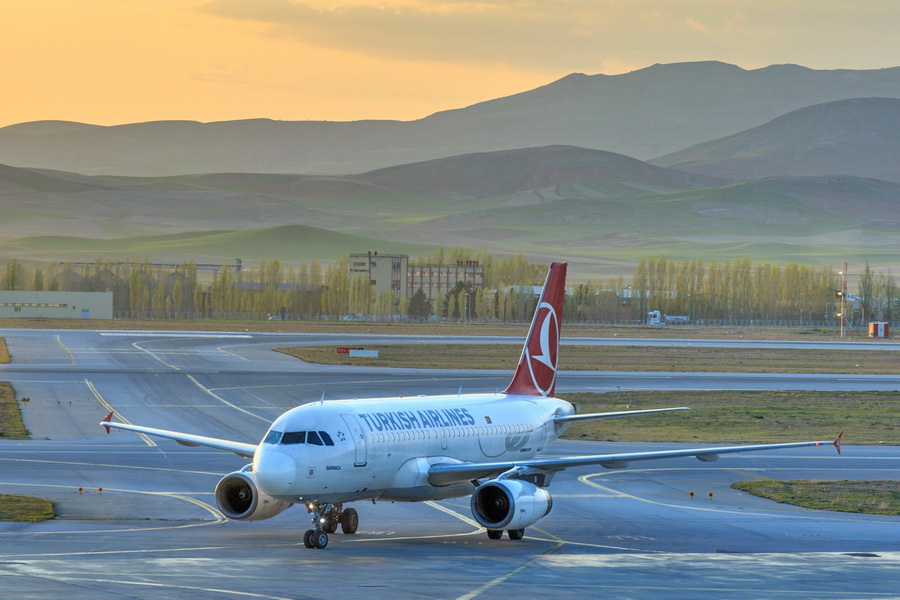
Central Anatolia Region, home to Turkey’s capital, Ankara, is a primary transportation line with well-connected train, bus and flight routes. Getting to Cappadocia, Konya, or smaller cities like Kırıkkale or Kırşehir is efficient.
By Air
Ankara’s Esenboğa Airport (ESB) serves international and domestic flights, linking Central Anatolia to major cities like Istanbul, İzmir and Antalya. For Cappadocia, fly into Nevşehir Kapadokya (NAV) or Kayseri Erkilet (ASR), both accessible via Turkish Airlines, Pegasus Airlines and AnadoluJet. Konya and Sivas also have airports, though flights may require connections.
By Bus
Ankara’s AŞTİ bus terminal, Turkey’s largest, volunteers round-the-clock services to all provinces. Companies like Kamil Koç and Nevşehir Seyahat run direct routes to Cappadocia (4 hours from Ankara), Konya (3 hours), and beyond. Tickets can be booked online via Obilet or Enuygun.
By Train
Ankara’s renovated Ankara Garı station connects to Istanbul, Konya and eastern provinces via high-speed rail. The Doğu Ekspresi (Eastern Express) is a scenic overnight option. Trains are affordable, and stations are centrally located. To reach Ankara’s station, you should use the M4 metro line.
By Car
Highways in Central Anatolia are well-maintained and a pleasure toride. From Ankara, Cappadocia is a 4-hour drive, Konya is 3 hours and Kırıkkale is just 1 hour. Rental cars are available at Esenboğa Airport, or use BlaBlaCar for shared rides.
Local Transport
In Ankara, the AnkaraKart provides access to metros, buses and trams. Taxis are metered and reliable. For intercity travel, minibuses (dolmuş) and shuttle services (like those from Kayseri Airport to Cappadocia) are economical options.
Key Routes
- Ankara to Cappadocia: 4 hours by car, 5 hours by bus, or a 1-hour flight.
- Ankara to Konya: 3 hours by bus, 1.5 hours by high-speed train.
- Ankara to Sivas: 7 hours by train, or fly via Istanbul.


